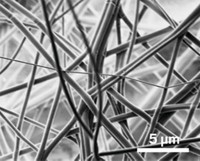Advertisement
Grab your lab coat. Let's get started
Welcome!
Welcome!
Create an account below to get 6 C&EN articles per month, receive newsletters and more - all free.
It seems this is your first time logging in online. Please enter the following information to continue.
As an ACS member you automatically get access to this site. All we need is few more details to create your reading experience.
Not you? Sign in with a different account.
Not you? Sign in with a different account.
ERROR 1
ERROR 1
ERROR 2
ERROR 2
ERROR 2
ERROR 2
ERROR 2
Password and Confirm password must match.
If you have an ACS member number, please enter it here so we can link this account to your membership. (optional)
ERROR 2
ACS values your privacy. By submitting your information, you are gaining access to C&EN and subscribing to our weekly newsletter. We use the information you provide to make your reading experience better, and we will never sell your data to third party members.
Biological Chemistry
Electric bandage zaps biofilm infections
Dressing treats wounds without antibiotics by disrupting bacterial communication
by Tien Nguyen
November 13, 2017
| A version of this story appeared in
Volume 95, Issue 45

More than half of human infections are caused by bacteria that glom on to one another or to a surface to form a protective biofilm that can be difficult to treat with antibiotics. Researchers led by Chandan K. Sen at Ohio State University Wexner Medical Center have developed a textile-based electric bandage that fights infections physically instead of chemically, thwarting the bacteria’s ability to develop resistance. They now report the first test of the bandage’s effectiveness for treating biofilm infections in pigs (Ann. Surg. 2017, DOI: 10.1097/sla.0000000000002504). The dressing is patterned with silver and zinc polka dots that create a weak electric field when they come into contact with body fluids at the wound site, which disrupts the electrical signals that bacteria send to one another to form biofilms. In the test, the researchers studied pigs with burn wounds infected with human bacterial strains. They bandaged the wounds either within two hours of the injury or a week after the injury. Using scanning electron microscopy, the team found that the “electroceutical” dressing was able to prevent or disrupt biofilm formation and speed up wound healing compared with a placebo bandage.





Join the conversation
Contact the reporter
Submit a Letter to the Editor for publication
Engage with us on Twitter